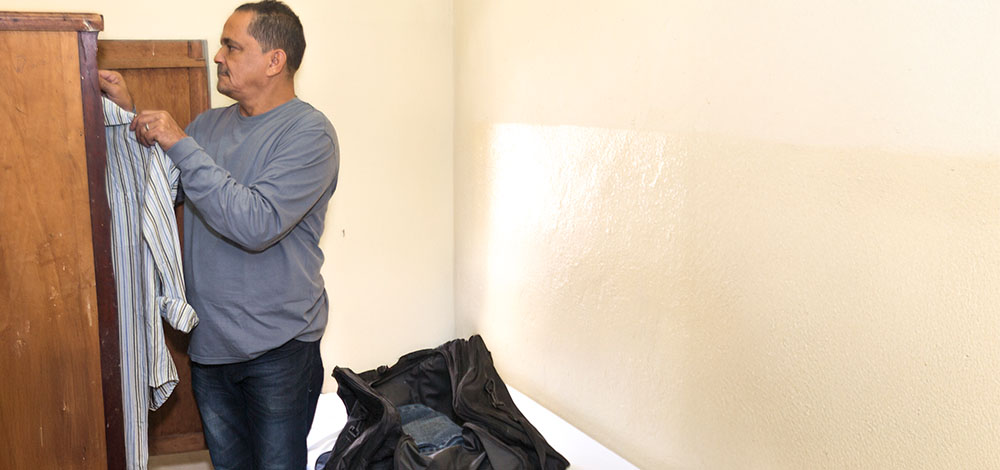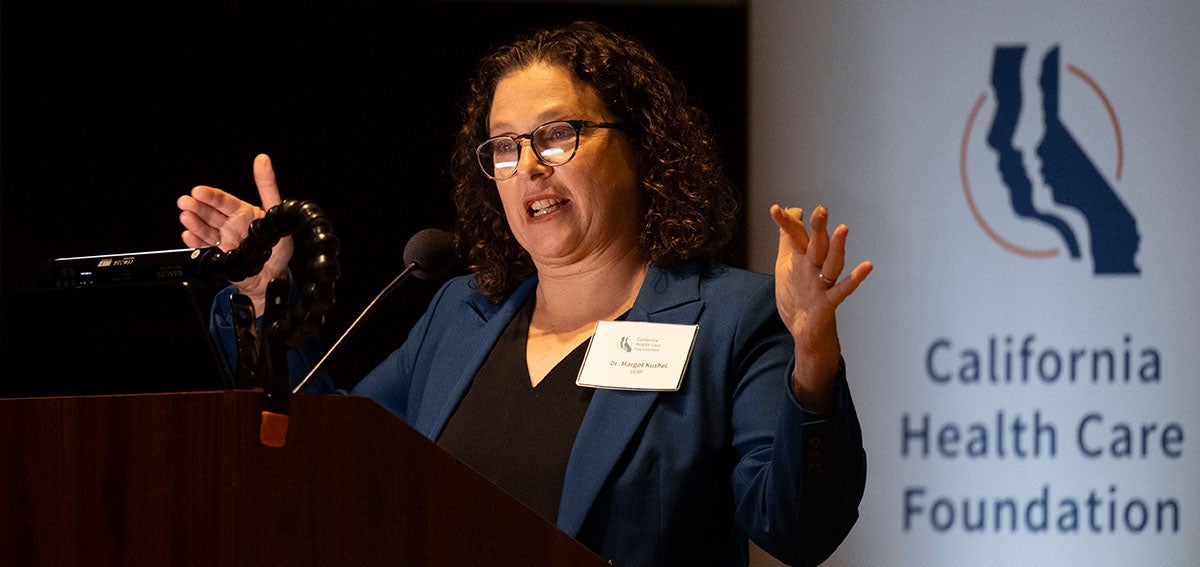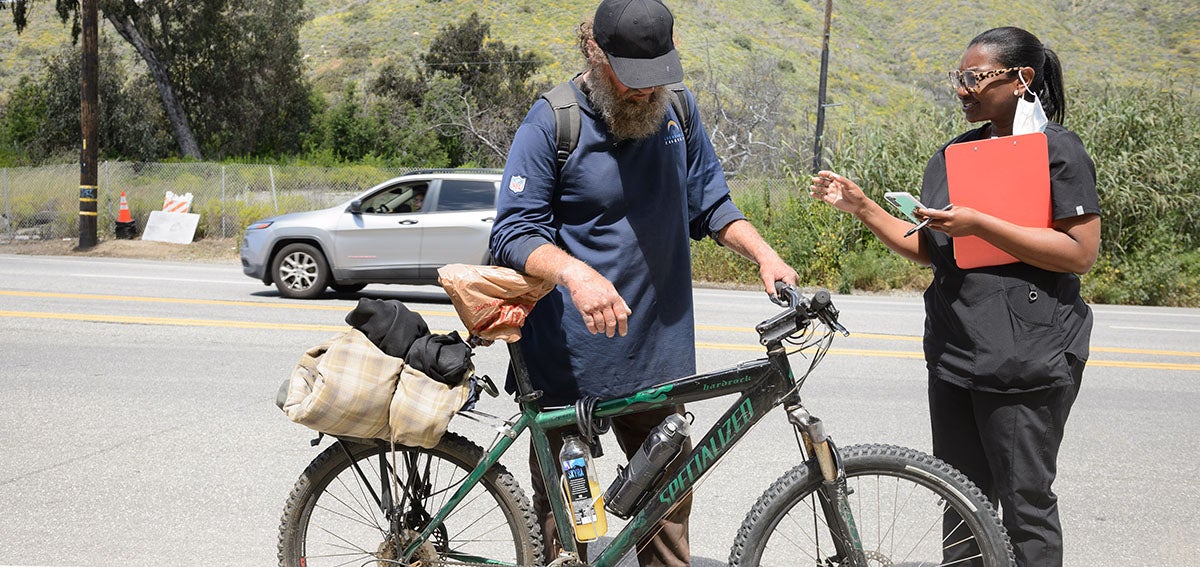California’s persistent homelessness crisis has fueled rapid growth in community street medicine programs dedicated to bringing health care and social services to unsheltered people. The programs are staffed by providers who seek out and offer care to people residing in places not intended for human habitation. The innovative efforts of these teams ensure that Californians lacking access to conventional health care services are not abandoned and treated as less than human, advocates say.
More than 150,000 people are experiencing homelessness in California. When their health and housing needs go unmet, it is difficult for them to stabilize their lives, and the consequences can be severe. Untreated health care problems, along with trauma, exposure, overdoses, and other challenges, cause unhoused people to die at dramatically higher rates than the general population.
Most street medicine programs devote significant effort to going into the community to search for and engage with people who have unmet needs, but no two programs are exactly alike. Each is customized to serve the unique requirements of the local population.
Interest in launching street medicine programs in California has never been greater. The state’s Department of Health Care Services (DHCS) recently issued guidance to Medi-Cal managed care plans to enable reimbursement for street medicine programs. The department also said these health care practitioners can now be designated as primary care providers for people experiencing homelessness. These policy changes align with ambitious reforms set out by DHCS’s CalAIM initiative. They are intended to provide an approach that is more patient-centered and reflective of whole-person care, which includes both medically necessary health care services and support for efforts to address social drivers of health.
New Medi-Cal Policies for Street Medicine
The California Department of Health Care Services has released an All Plan Letter to managed care plans on the use of street medicine to address the health needs of Medi-Cal enrollees experiencing unsheltered homelessness. California has the largest concentration of unsheltered people in the nation. These policies will affect Medi-Cal reimbursement of street medicine and broaden the definition of who can be a primary care physician for unsheltered patients.
A new CHCF issue brief (PDF) summarizes key findings from the USC research and provides information on how the All Plan Letter, released in November, will affect the provision of street medicine. The brief is geared to clinicians and others who operate street medicine programs or are interested in establishing new ones.
Because of these developments, it is essential that the health care community learn how existing street medicine programs are organized — and how they can be sustainably replicated, said Brett Feldman, an assistant professor of family medicine and director of the Division of Street Medicine at the Keck School of Medicine of the University of Southern California (USC) in Los Angeles.
“This recognition of street medicine means that the lives of people who rely on these programs for their survival are as valuable as everyone else,” said Feldman, a physician assistant who has been practicing street medicine since 2007. “This allows us to keep the street medicine model intact. Rather than bending the model to fit into the system, it expanded the system to include it in the form that works.”
The California Landscape
To shed light on how street medicine is being provided in communities across California, CHCF supported the USC Street Medicine research team, led by Feldman, to conduct a landscape analysis of existing programs statewide. The analysis included interviews with street medicine providers, managed care organizations, and community partners, as well as site visits at four exemplary street medicine programs by Feldman. The researchers’ goals were to:
- Discover how many street medicine teams exist in California and where they operate
- Learn about the staffing and structure of existing teams
- Understand the breadth of their services
“We visited street medicine teams around the state to get a firsthand look at their programmatic approaches and protocols, and to see up close the physical obstacles providers must overcome to reach patients,” Feldman said.
Videographer-storyteller Mark Horvath of Invisible People, a nonprofit group that educates the public about homelessness, accompanied Feldman to document this critical work in the form of virtual site visits.
Street Medicine Strategy and Tactics
The central goal of street medicine providers is to use health care to establish trusted relationships with unsheltered patients based on a mutual desire to take a healing journey together. Without these relationships, it is difficult to help patients stabilize their situations and improve their health.
Street medicine is practiced by providing outreach, engagement, and health care to people in remote encampments, on city streets, near freeway ramps, and in hidden corners of urban and rural communities. Often it entails practicing medicine out of a backpack. Health care services range from full primary care to episodic urgent care, and additional resources are made available to people who need other types of help.
Most teams choose to visit regular locations at scheduled times and focus on ensuring that established patients have continuity of care.
Street Medicine Redding: Off the Grid in a Rural Community
As part of the USC Street Medicine landscape analysis, Feldman visited street medicine teams in multiple settings to showcase the mix of very small towns and huge cities where unhoused people live in California. One of these teams works in the rugged Northern California terrain of Shasta County, where care is delivered to rural people in desperate need of help. In addition to street medicine, the Redding-based program at Shasta Community Health Center delivers care to the unhoused in a variety of settings, including clinics, shelters, a mobile van, and medical respite care.
One community they visit regularly is a tight-knit group of unsheltered residents living in a large tent camp in rolling hills outside Redding. The street medicine providers, led by Kyle Patton, MD, have become a stabilizing force in the lives of the unhoused, who trust him implicitly. Residents consider Patton their primary care doctor, and his presence adds to their sense of community. Patton said he regularly gets “referrals” from unsheltered people in this encampment worried about particular health problems of their unsheltered neighbors.
Earlier this year, a man named Jesús moved into the encampment. During Feldman’s visit, four different neighbors told Patton that Jesús needed care for a badly infected foot. When Patton and Feldman found him, Jesús recognized Patton from previous visits to the street medicine program’s mobile van and from Jesús’s use of the health center’s mobile showers at a location about 10 miles away. Patton treated the wound and dispensed antibiotics from his backpack. The physician worried that Jesús might need surgery to effectively treat the infection, so he made sure that a visit with a surgeon was scheduled the following week, Feldman said.
“Kyle was like an old-school country doctor out there,” Feldman said. “He was trusted and took care of whatever they needed, whether it was something medical or something else that would make their lives easier. You hear that the unhoused are a difficult population to engage with, and Kyle shows that isn’t the case when you are trustworthy. The people were very comfortable reaching out to him, and he was comfortable letting them lead him in their care planning.”
Street Medicine Los Angeles: A Voice of Lived Experience
About 550 miles south of Redding, street medicine teams comb neighborhoods in Los Angeles, the nation’s second most populous city. Four USC Street Medicine teams led by Feldman provide full-service primary care on the street, including dispensing medications, drawing blood, performing ultrasounds, and treating behavioral health and substance use disorders.
Feldman said USC Street Medicine teams focus on being trustworthy with unsheltered people. “Offering the best medical care is meaningless if people can’t access it,” he said.
Many street medicine teams include staff members who serve as trusted messengers and help patients gain confidence in street medicine, he said. Often these pivotal roles are filled by people with lived experience of homelessness, and they keep USC Street Medicine’s work grounded in mutual respect, Feldman said. On the USC Street Medicine teams, these roles are filled by community health workers. Other organizations may label this role peer support specialist, patient navigator, or outreach worker.
Feldman underscored the immense value added by community health workers by recalling an incident two years ago when the USC Street Medicine team was asked to provide urgent care to Katrina, a resident of a gang-controlled Los Angeles encampment known as “the Devil’s Playground.”
Without community health care workers, it would be impossible for USC to do street medicine in Los Angeles.
—Brett Feldman, USC Street Medicine
Katrina became a paraplegic after a bicycle accident years ago and could no longer sense heat or pain in her legs. As a result, one day she sustained third-degree burns to her legs without immediately realizing it. After she was treated at a hospital burn unit, Feldman’s team was assigned to visit her tent three times a week to change Katrina’s dressings. Joseph Becerra, a community health worker with years of lived experience with homelessness, is the team’s bridge to many communities.
He negotiated with the leaders of Katrina’s encampment to enter the area and bring her out of that area to perform the wound care. Katrina spoke highly of the USC Street Medicine team to her neighbors, and they eventually allowed the whole group to enter the camp regularly to tend to her.
Because Joseph gained the community’s trust, the team ended up treating other residents of the encampment for what turned out to be serious issues — heart conditions, lung disease, even cancer. The team also coordinated the care of a patient with a broken pelvis. The team has followed Katrina through multiple moves since then to provide her care. Today she stays in a broken-down RV, Feldman said.
“In Los Angeles, people are either moved or forced to move about four times a month,” Feldman said, “so if we are to have any hope of finding them to continue their care, we need people who know the streets and how to communicate with people on the street. In the USC street medicine teams, these are community health workers. Without them, it would be impossible to do street medicine in Los Angeles.”
Mapping a Sustainable Future for Street Medicine in California
The CHCF street medicine landscape analysis, which will be released early next year, will help draw a road map for the future development of quality street medicine programs. The report will reveal attributes of successful programs and share knowledge of what is possible in this growing field. As Medi-Cal leaders move to integrate street medicine into the state’s benefit structure, Feldman hopes this analysis will help local governments, community health centers, and nonprofit groups develop programs that use evidence-based practices.
“We hope our work will help policymakers define a quality-based program in accordance with best practices and identify challenges that can be overcome through policy changes,” Feldman said.
In addition to sensible policies, successful street medicine requires one other crucial ingredient. The street medicine pioneers who have been providing this special type of care for many years already know that programs of all types and settings cannot succeed without embracing core values of authenticity, love, and solidarity with unsheltered patients, Feldman said.
“We believe our efforts in street medicine can spark change to help communities and health care systems move further toward justice and health equity,” he said. “We agree with the first core value of the Street Medicine Institute: To recognize the value and dignity of every person, we must go to the people.”
Take Four Virtual Street Medicine Site Visits Across California
Authors & Contributors
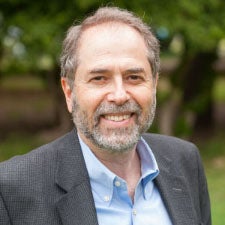
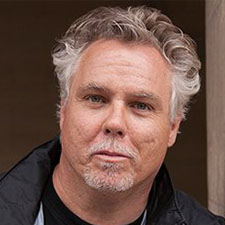
Mark Horvath
Mark Horvath is living out his passion and doing what burns deep inside of him. In 2008, he founded Invisible People, a Los Angeles–based nonprofit organization, to educate the public about homelessness through innovative storytelling, news, and advocacy. Horvath launched the organization to give a face and voice to people experiencing homelessness, something he knows all too well, since he once lived among them. After an extended period of unemployment due to the 2008 recession and facing homelessness a second time, Horvath grabbed his camera and began using social media to help tell stories of unhoused people.
Horvath regularly works on cause campaigns with corporate clients, including major brands like Hanes, Ford, Pepsi, General Motors, and Ritz Crackers. He has consulted for the city of Los Angeles, Los Angeles County, the Los Angeles Police Department, the state of Utah, the city of San Francisco, the Annenberg School for Communication & Journalism at the University of Southern California, and others.

















